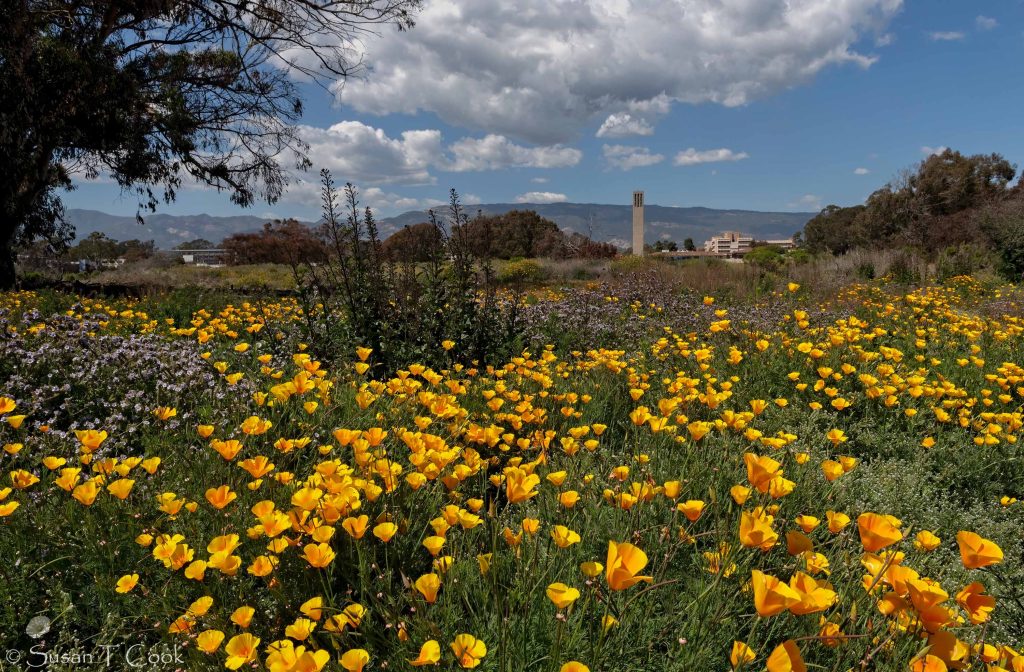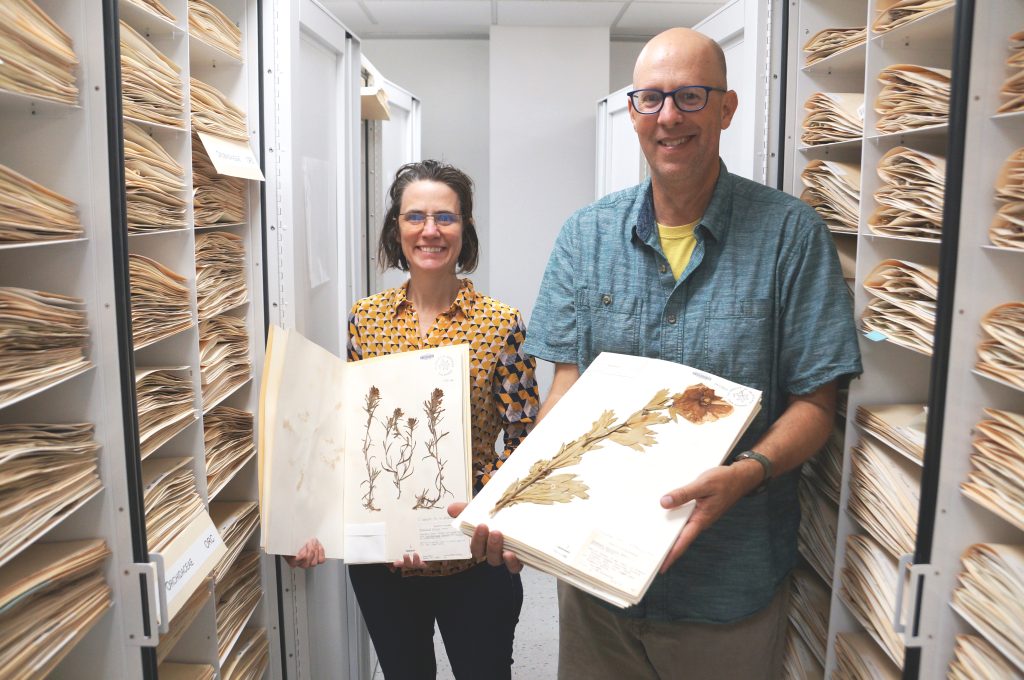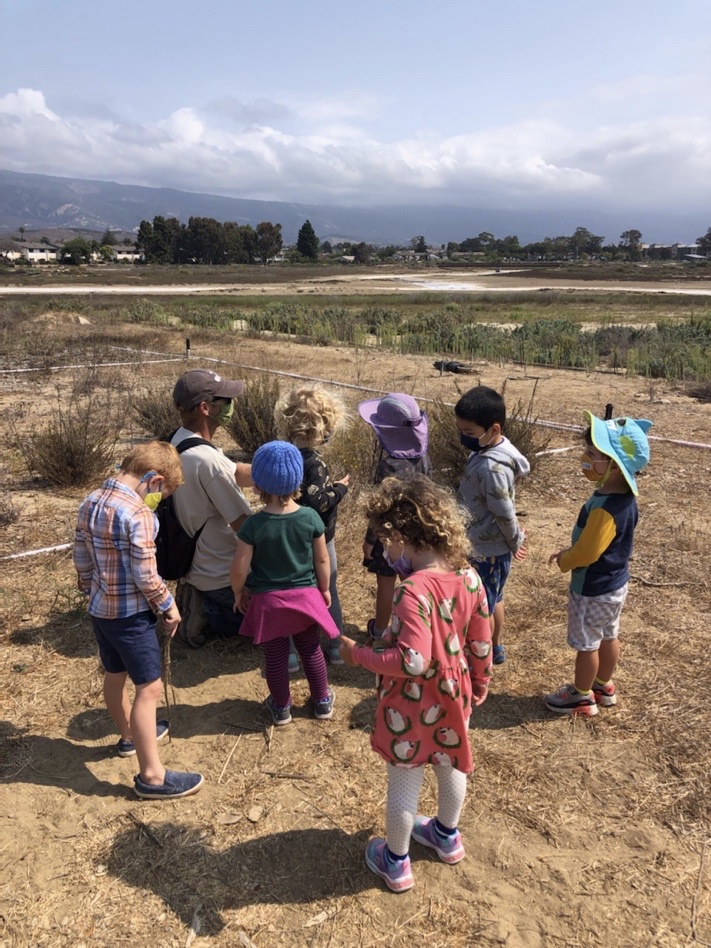Cheadle Center for Biological and Ecological Restoration (CCBER)
CCBER’s Restoration Sites:
The Cheadle Center for Biodiversity and Ecological Restoration (CCBER) manages more than 300 acres of open space between Ellwood Mesa and Goleta Slough. Characterized by a rich complex of oak woodland, coastal sage scrub, grassland, and wetland ecosystems, the area is known for its relatively high level of biodiversity. CCBER’s restoration project sites and management areas serve to protect and strengthen the region’s ecology through habitat conservation, upland restoration, wetland creation and enhancement, and the implementation of sustainable storm water management solutions. Through careful integration with local watersheds and surrounding natural areas, CCBER’s management areas provide important corridor and refuge for wildlife and ensure the long-term preservation of the region’s natural resources. See a map of their sites here!
- Storke Wetlands
- Storke Wetland, historically the southwestern extension of Goleta Slough, has been cut off by berms, drainage ditches and tide gates. At an elevation of just 0.5 to 3.2 ft above mean sea level (MSL), the wetlands could still be contiguous with the Slough if the tide gates were opened. The 1981 Long Range Development Plan (LRDP) recognized the value of these palustrine salt marsh wetlands and by the 1991 LRDP these areas were formally designated as Ecologically Sensitive Habitat Areas (ESHA) and open space. Raptors hunt and waterfowl take refuge in these brackish waters. Restoration activities have focused on planting oaks in the upland areas and topographic alterations to create more permanently flooded or tidally.
- Manzanita Village
- The Manzanita Village Restoration Project began in 2002. The California Coastal Commission (CCC) required restoration of 0.86 acres of wetlands as mitigation for impacts to wetland buffers at the project site. In addition to the mitigation requirements, the UCSB Housing and Residential Services Department provided funding for upland native grassland habitat restoration surrounding the wetlands and the creation of 1300 linear feet of bioswales. Bioswales are created wetlands designed to convey and filter storm water. To date, more than 80,000 native plants have been installed with the assistance of more than 50 UCSB student interns and volunteers. Ongoing monitoring and maintenance will continue in perpetuity.
- Campus Lagoon
- The Campus Lagoon currently maintains stable water levels with weirs. The Lagoon receives water inputs from 8 storm drains, surface flows and seawater from the marine science laboratories and aquaria. Restoration began in 1995. A combination of mitigation funding for the UCEN expansion and funding from Housing and Residential Services have contributed to several large restoration projects in and around the lagoon including the creation of salt marsh islands and shallow areas for shorebirds as well as the freshwater habitats adjacent to Manzanita Village. Current activities include the enhancement of water quality by creating freshwater wetlands and continued restoration of sand dunes, coastal sage scrub and coast live oak woodland.
- North Campus Open Space (NCOS)
- UCSB’s North Campus Open Space (NCOS) comprises 136 acres of upland and wetland habitats contiguous with and augmenting the greater Elwood-Devereux Open Space. The project has restored wetland and associated upland habitats that existed before the area was converted to the Ocean Meadows golf course in the 1960s, which filled in the historic upper arms of Devereux Slough with soil from the surrounding uplands. The NCOS restoration project began in 2017 with a fine scale grading of the site in order to re-create the salt marsh and use the excavated soil to rebuild the upland habitats to the southwest, which are now called the NCOS Mesa.
- North and East Bluffs
- North and South Parcels
- San Joaquin, San Clemente, and Sierra Madre

CCBER’s campus lagoon site with Storke Tower in the distance.
Some of CCBER’s Restoration Tools:
- Rare and Endangered Plants
- CCBER works to preserve and restore Santa Barbara’s rare and endangered plants. Our efforts to introduce the once extinct Ventura Marsh Milk Vetch (Astragalus pycnostachyus var. lanosissimus) to NCOS have been successful with the establishment of the largest population of this species in existence.
- Nursery
- The CCBER nursery and greenhouse prides itself in growing the finest local genotype restoration plant material available for our restoration projects. Grown organically from seed, spores, and propagules collected solely by CCBER staff, the nursery has grown over 200 species of locally native plants from grassland, oak woodland, coastal sage scrub, salt marsh, freshwater marsh, vernal pool, coastal dune, and coastal bluff. We can house up to 50,000 plants at a time and have propagated hundreds of thousands to date.
- Prescribed Burns
- CCBER also manages the campus lagoon where we have been implementing prescribed burns as a restoration tool for the last decade. Research shows that these burns, if hot enough, can reduce the seed bank of invasive grass species by up to 99%, providing a unique window of opportunity for restoration staff to create fields of native wildflowers and restore patches of Coastal Sage Scrub.

CCBER employ Andy Lanes giving students a tour of the nursery.
CCBER’s Community and University Involvement:
- Natural History Collections
- The Cheadle Center houses the UCSB Natural History Collections including Herpetology, other Vertebrates, Vascular Plants, Lichens, Algae, Invertebrate Zoology and several other small botanical and zoological collections.
- Research
- CCBER has numerous avenues to get involved in research through both our restoration and collections departments. There are plenty of opportunities to participate in field work, contribute to the writing of scientific papers, curate specimen collections, work with existing data sets, start one’s own research project, or contribute to CCBER’s community science projects through the app iNaturalist.
- Kids In Nature (KIN)
- The mission of the Kids in Nature Environmental Education program at the Cheadle Center for Biodiversity and Ecological Restoration is to promote the aspirations and achievements of students in underserved schools by providing quality environmental science education and experiences. For both students and teachers, we create and encourage personal connections to the natural world, which will foster an interest in becoming stewards of the environment.
- Internships, Volunteering, and Student Workers
- There are plenty of opportunities to get involved, including 2nd Saturday volunteer events at NCOS and weekly Thursday nursery work. CCBER offers Coastal Fund funded, paid internships as well as student worker positions. Students can also take our Environmental Studies 95 class, a 1 unit field seminar where students learn about habitat restoration at our various sites from CCBER staff.
- More than half of current and former CCBER staff started their careers in habitat restoration as students with CCBER. Getting involved as a student can be a great way to gain work experience and transition from university to a career in the environmental field.

CCBER employees showing off some cool Collection plant specimens

One of the KIN classes exploring North Campus Open Space
